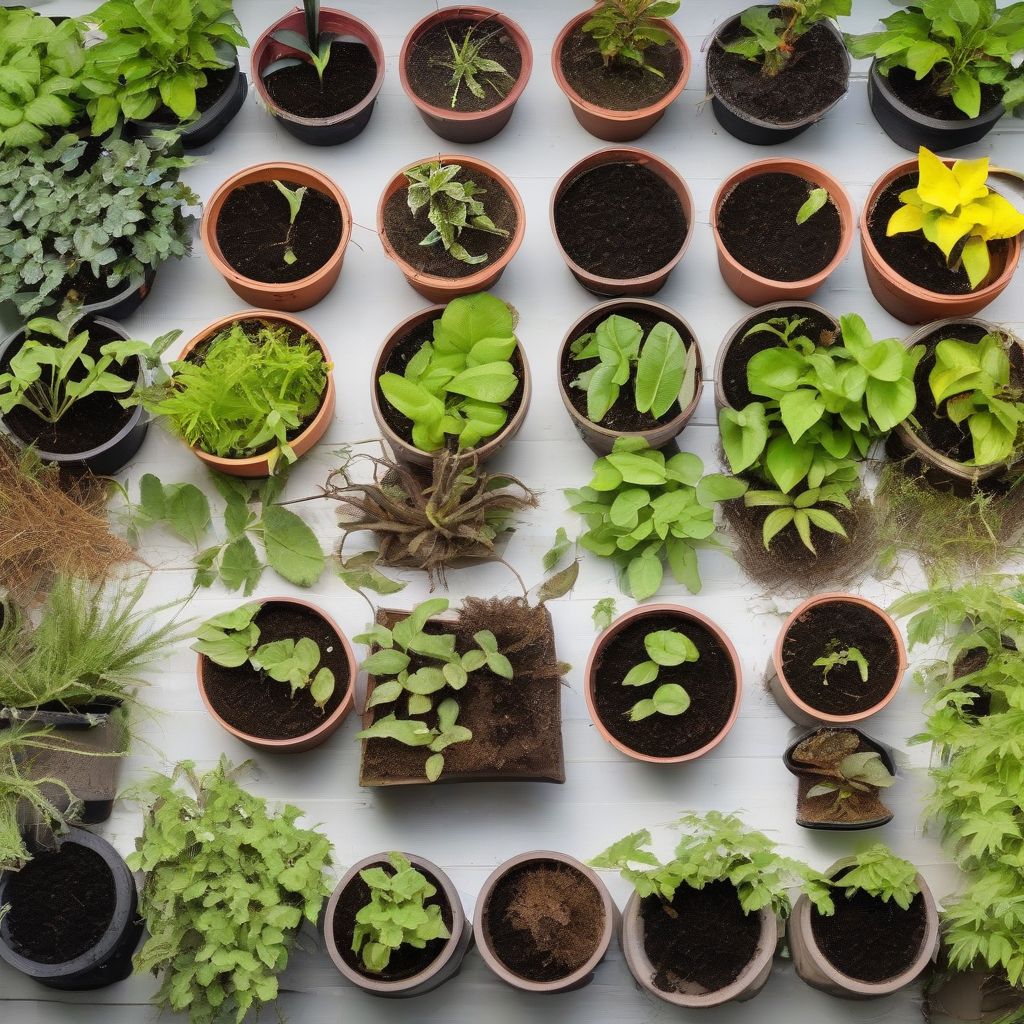“To plant a garden is to believe in tomorrow.” – Audrey Hepburn. As a nutritionist, I wholeheartedly believe in the power of fresh, wholesome food, and what better way to enjoy that than growing your own? Container gardening, in particular, offers a fantastic solution for both seasoned gardeners and enthusiastic beginners, especially those with limited space. However, even with the best intentions, container gardens can sometimes present unique challenges. Let’s delve into troubleshooting common container gardening problems, empowering you to cultivate thriving and bountiful plants right outside your doorstep.
Decoding the Signs: What’s Ailing Your Container Garden?
Just like us, plants speak a language – through their appearance! Wilting leaves, stunted growth, or yellowing foliage are all signs your plants are trying to tell you something’s amiss. Learning to interpret these signs is key to diagnosing and rectifying common container gardening problems.
1. Drainage Dilemmas: The Root of Many Evils
One of the most prevalent container gardening issues lies in improper drainage. Overwatering, while well-intentioned, can suffocate roots, leading to root rot and a cascade of problems. On the flip side, underwatering starves plants of essential moisture.
Symptoms: Wilting leaves, even when the soil feels moist, could indicate overwatering and potential root rot. Conversely, dry, crusty soil and drooping leaves are telltale signs of under-watering.
Solutions: Ensure your containers have adequate drainage holes. Choose a well-draining potting mix specifically designed for containers. When watering, allow excess water to drain completely. It’s always better to underwater slightly than to overwater.
2. Nutrient Deficiencies: Feeding Your Container Garden
Unlike plants in the ground, those in containers rely solely on you for their nutritional needs. Over time, the potting mix gets depleted, leading to nutrient deficiencies.
Symptoms: Yellowing leaves, stunted growth, and poor flowering are common indicators of nutrient deficiency.
Solutions: Opt for a high-quality potting mix enriched with slow-release fertilizers. Supplement with liquid fertilizers throughout the growing season, following product instructions carefully. Understanding the specific nutrient requirements of your chosen plants can make a world of difference.
3. Pests and Diseases: Uninvited Guests in Your Garden
Even in the controlled environment of containers, pests and diseases can creep in, jeopardizing the health of your plants.
Symptoms: From chewed leaves and sticky residue (signs of insects) to powdery mildew or fungal spots, recognizing these early signs is crucial.
Solutions: Regular inspection of your plants goes a long way in early detection and treatment. Introduce beneficial insects like ladybugs to control aphid populations. Organic insecticidal soap or neem oil can effectively combat a range of pests. Ensure proper air circulation to prevent fungal diseases.
 Troubleshooting Container Gardening Problems
Troubleshooting Container Gardening Problems
4. Root Bound Plants: Cramped Quarters Lead to Problems
As plants grow, their roots need space to spread and thrive. In containers, roots can become overcrowded, leading to a condition known as “root bound.”
Symptoms: A telltale sign is roots circling the bottom of the pot or even pushing the plant upward. Stunted growth and reduced vigor are other indicators.
Solutions: Choose appropriately sized containers for your plants. Repot your plants into larger containers when they become rootbound, gently loosening the roots before transplanting.
5. Environmental Stressors: Sun, Wind, and Temperature Considerations
Just like us, plants have their comfort zones when it comes to temperature and sunlight. Exposure to extreme conditions can stress your plants, making them more susceptible to problems.
Symptoms: Wilting, leaf scorch (browned edges), or even leaf drop can be indicative of environmental stress.
Solutions: Understand the light requirements of your plants and place them accordingly. Provide shade during the hottest hours of the day if necessary. Shield your plants from strong winds that can dry them out quickly.
Expert Tips for a Thriving Container Garden:
- Invest in Quality Potting Mix: Choose a well-draining, peat-based or coco coir potting mix specifically designed for containers.
- Feed Your Plants: Regular fertilization, using organic or slow-release fertilizers, is key to providing essential nutrients.
- Water Wisely: Allow the soil to dry slightly between waterings, and ensure adequate drainage to prevent root rot.
- Inspect Regularly: Keep a watchful eye out for signs of pests, diseases, or nutrient deficiencies. Early detection is crucial.
- Choose the Right Container: Opt for containers with drainage holes and consider the mature size of your plants when selecting pot size.
- Enjoy the Fruits (and Vegetables!) of Your Labor: There’s nothing quite as rewarding as harvesting fresh, homegrown produce from your own thriving container garden!
Conclusion: Nurturing Your Container Garden to Success
Container gardening, like nourishing our bodies, is a journey of learning, observation, and a touch of love. By understanding the common challenges and implementing simple solutions, you can empower your plants to thrive in their containers. Remember, every wilted leaf or stunted stem is a chance to learn and adjust your approach.
What challenges have you encountered in your container gardening journey? Share your experiences and tips in the comments below! Let’s create a community of thriving container gardeners, one pot at a time.
[amazon bestseller=”container gardening”]
